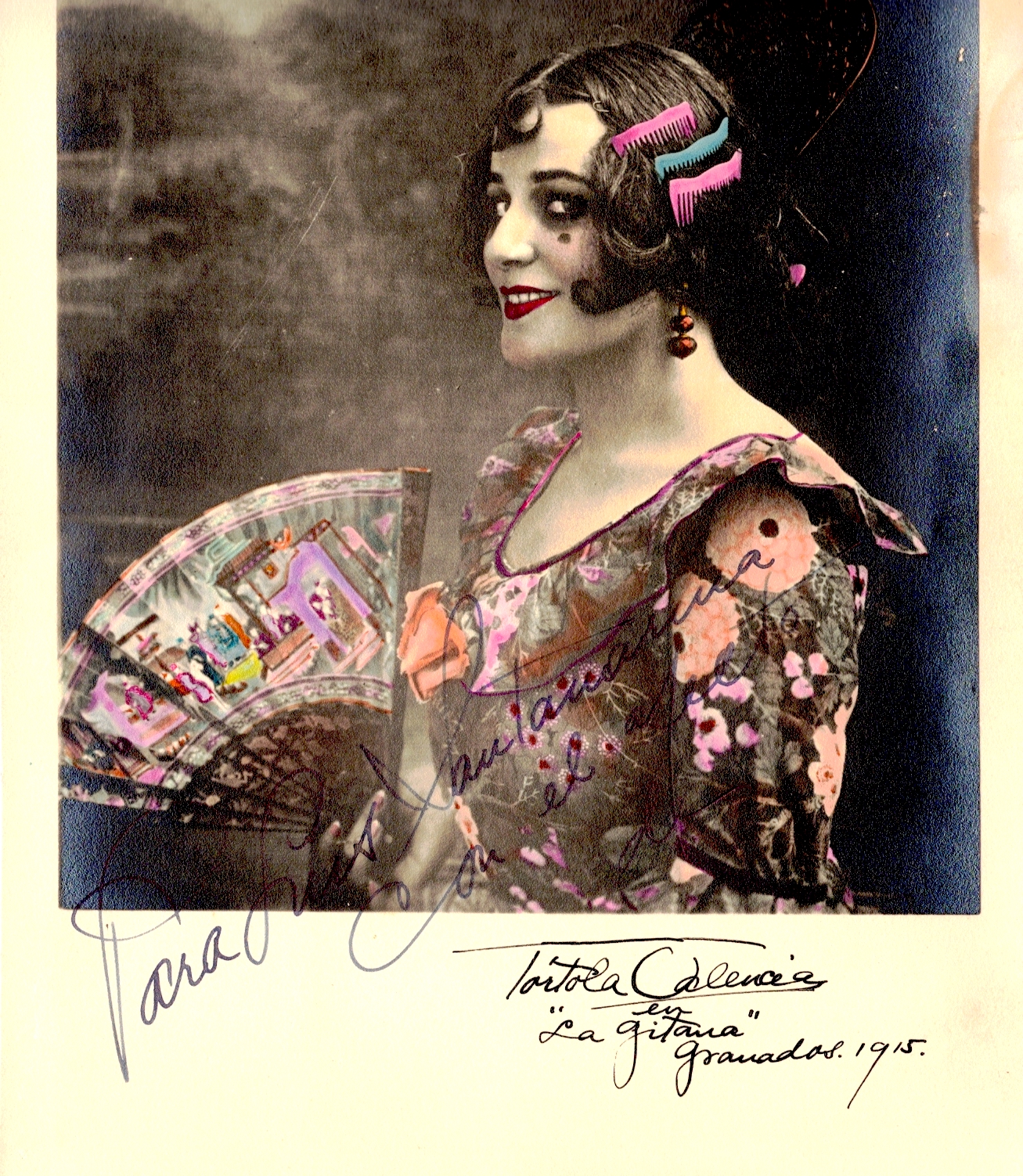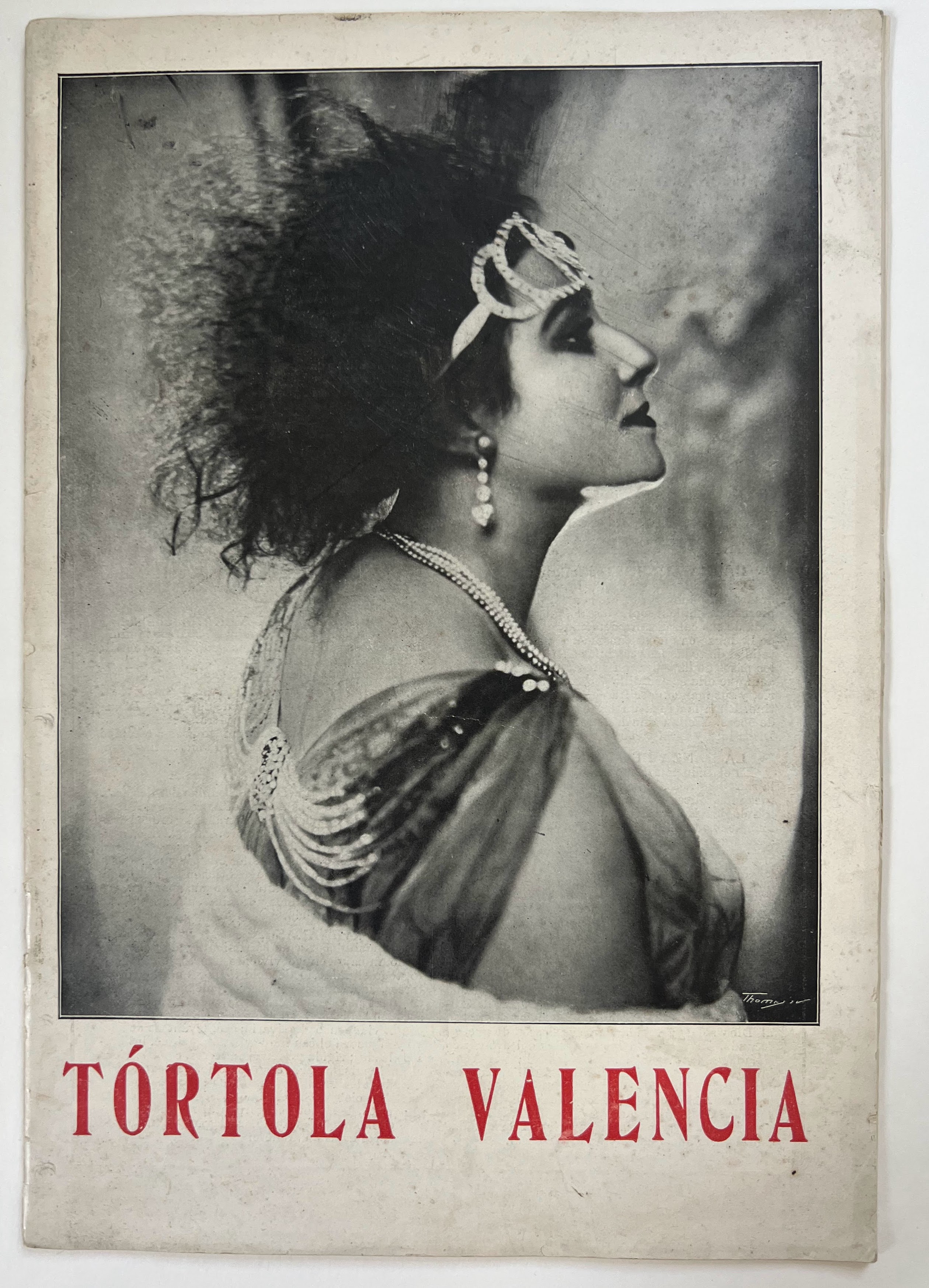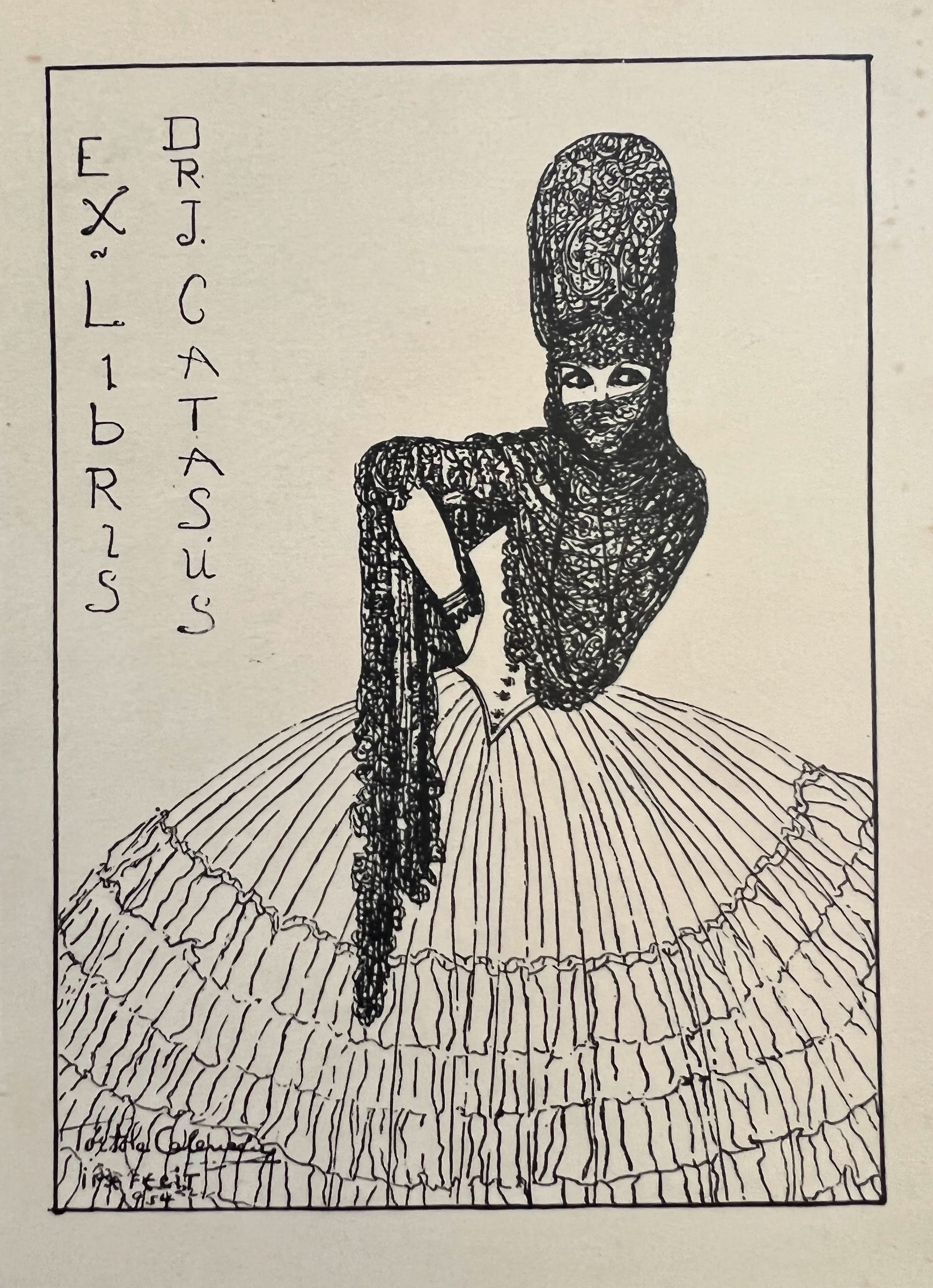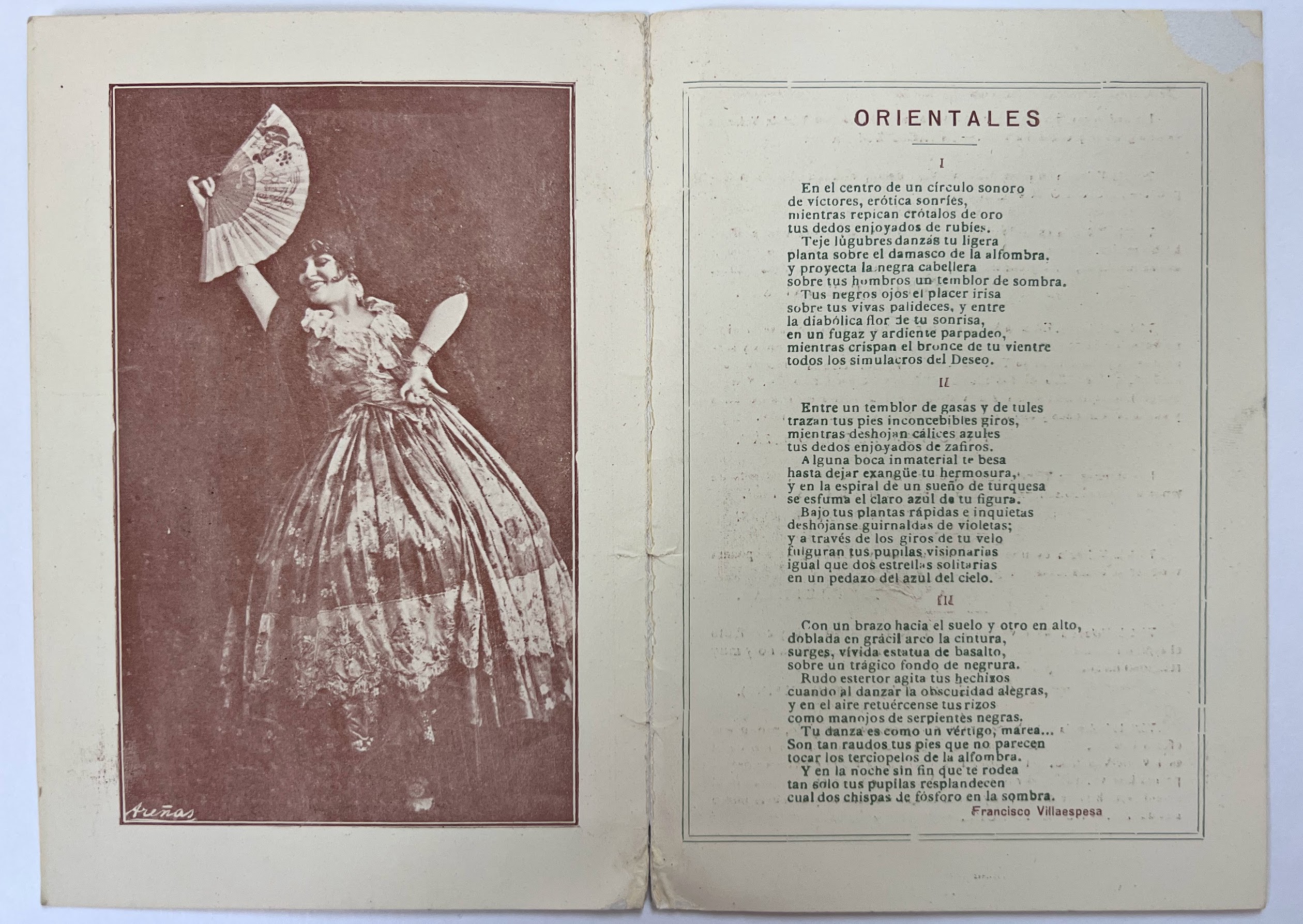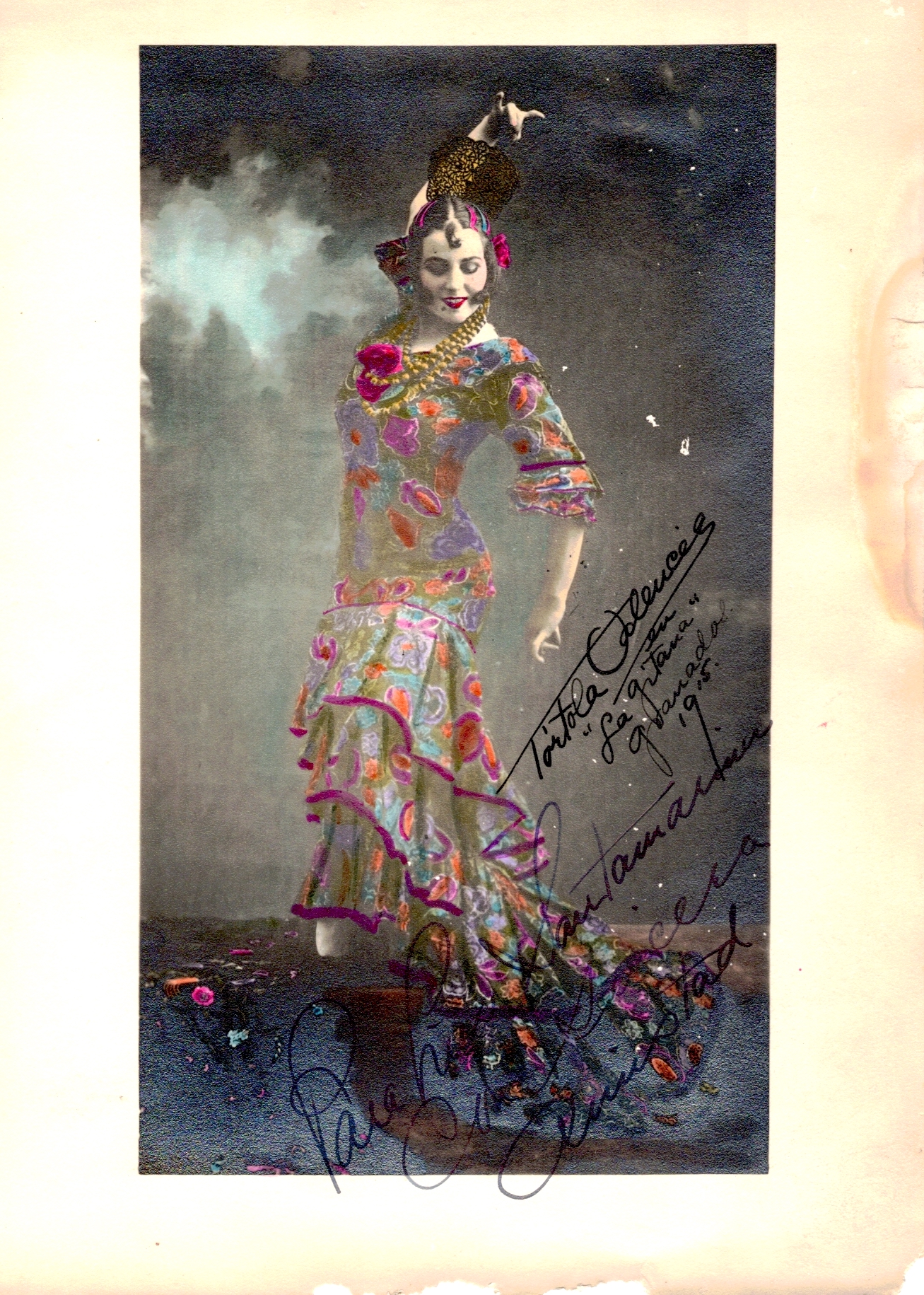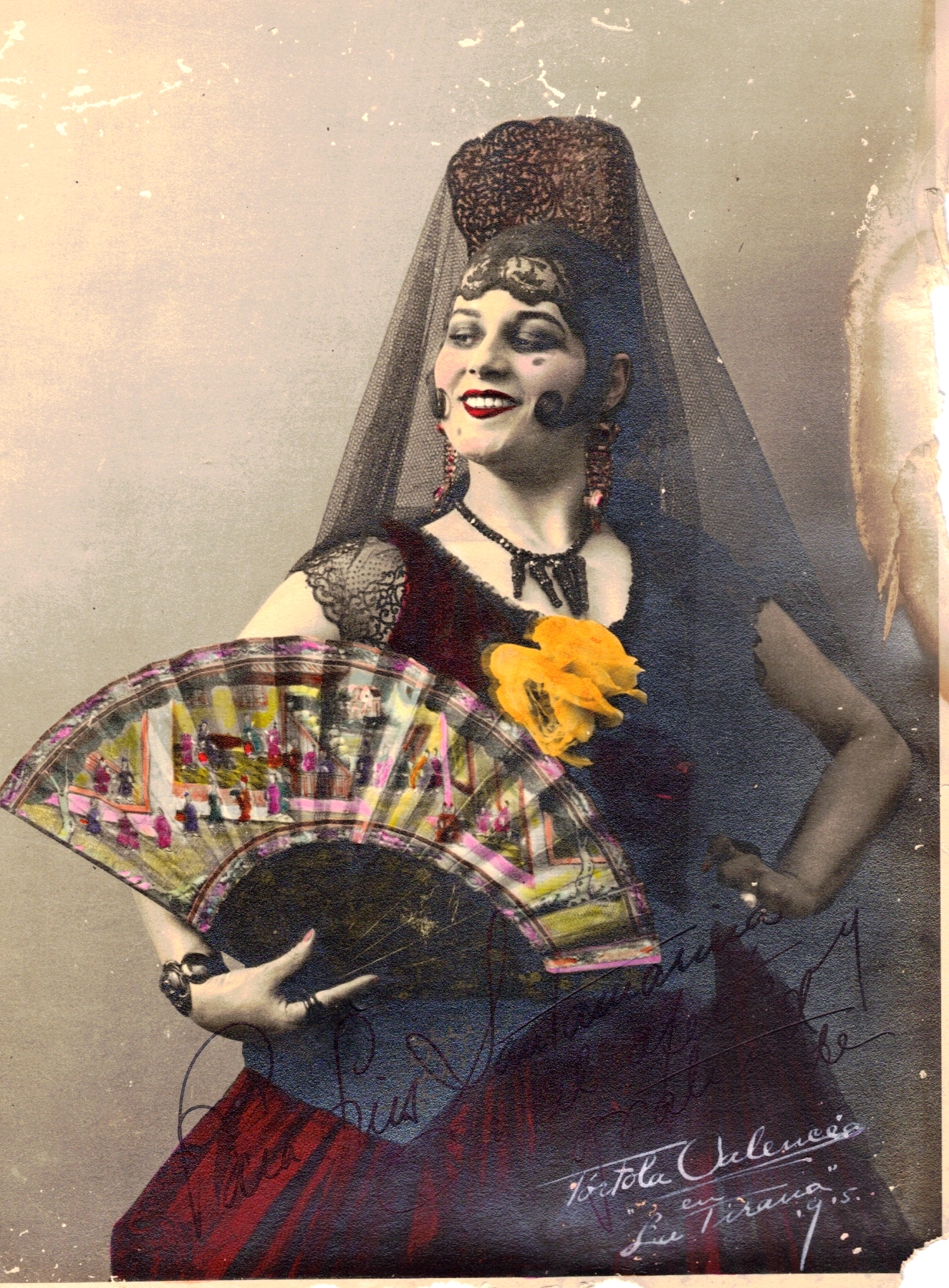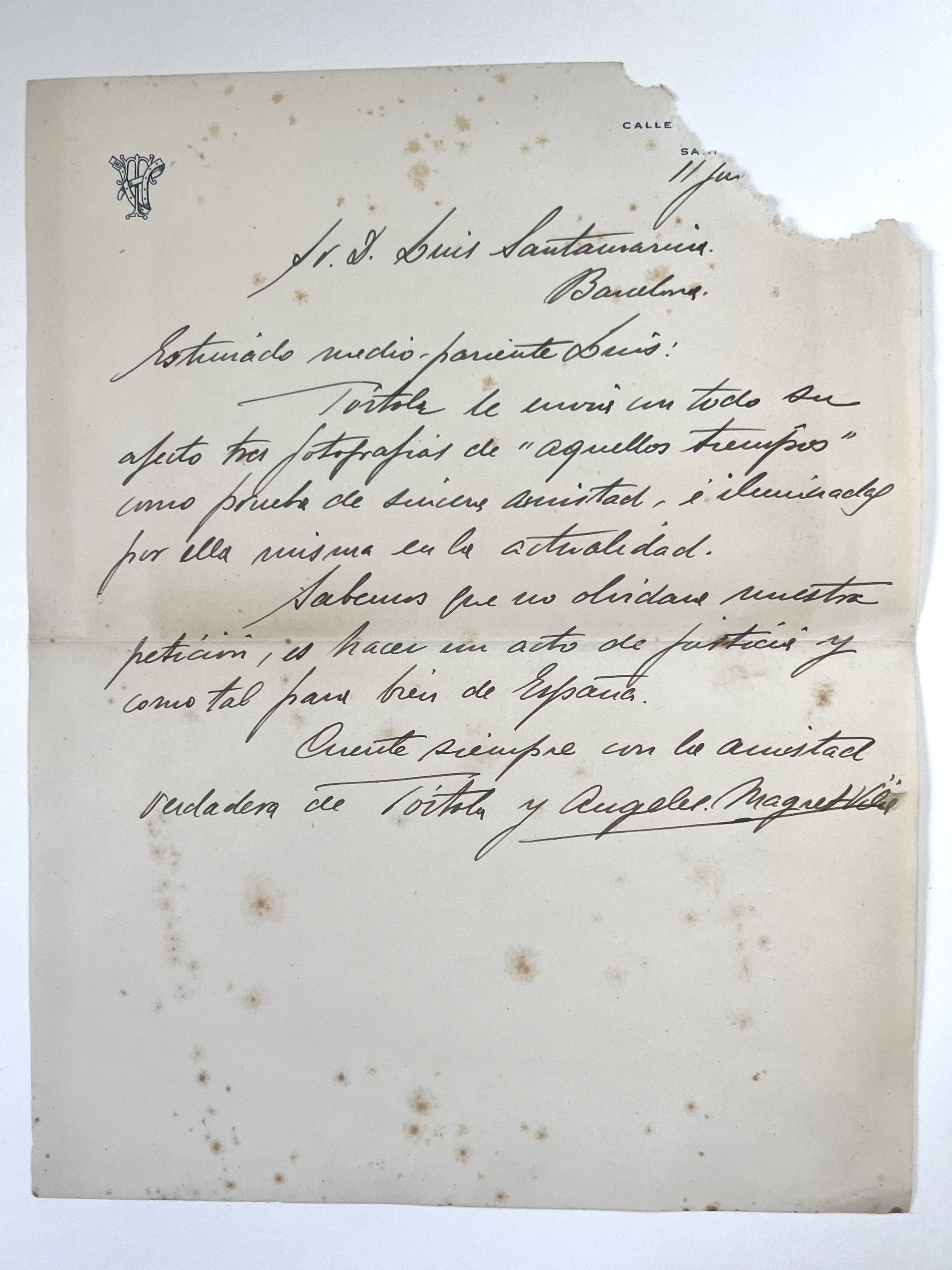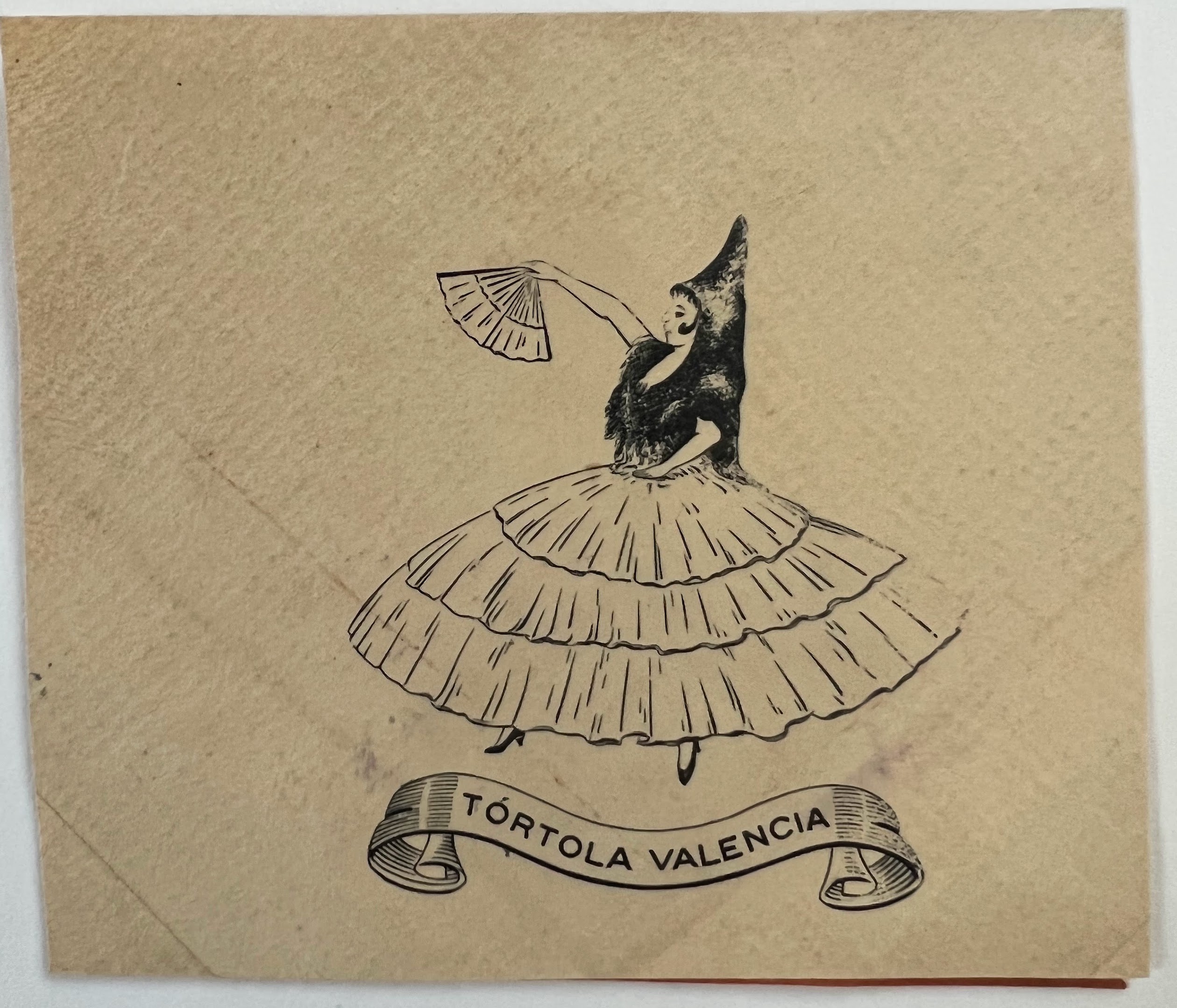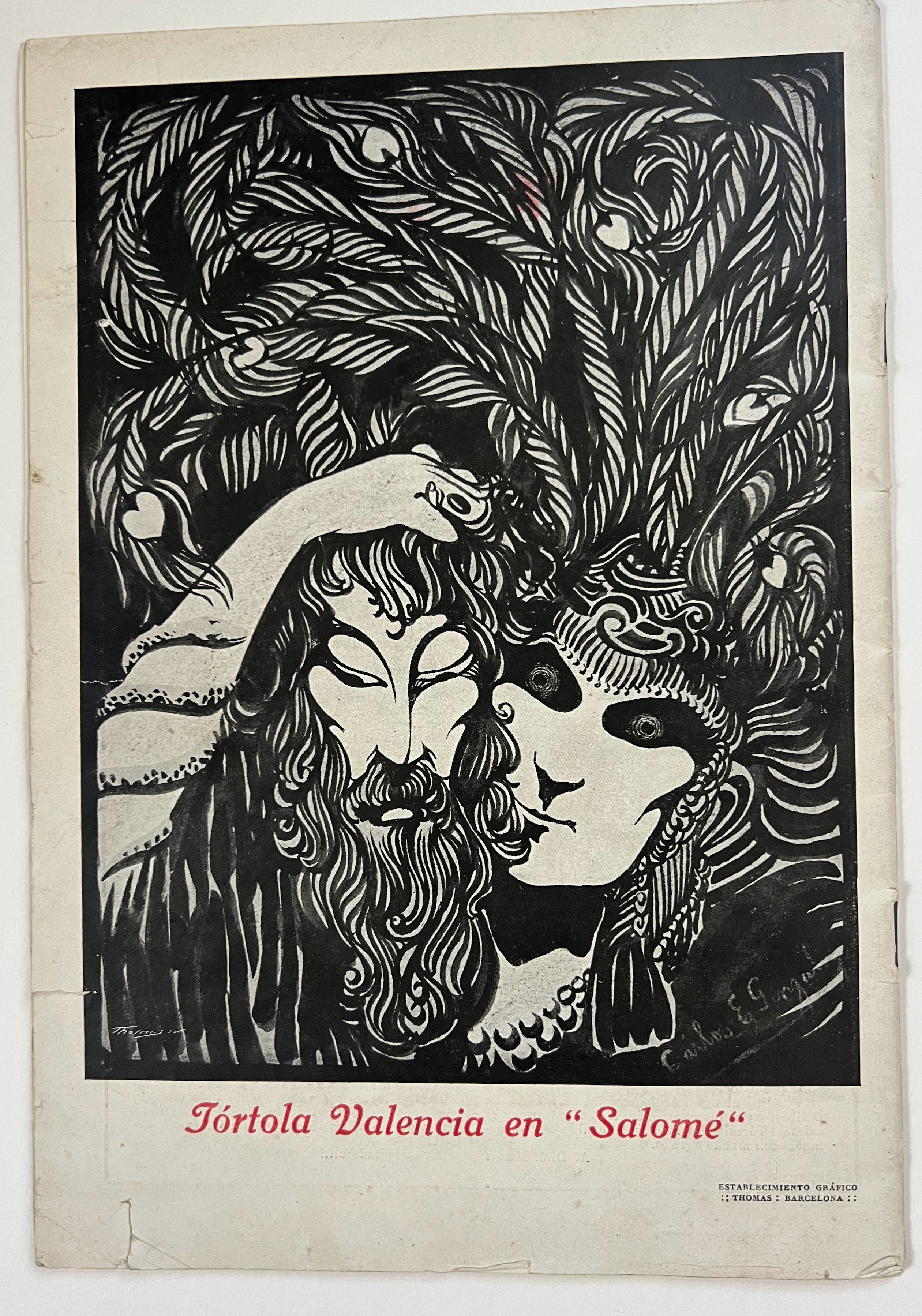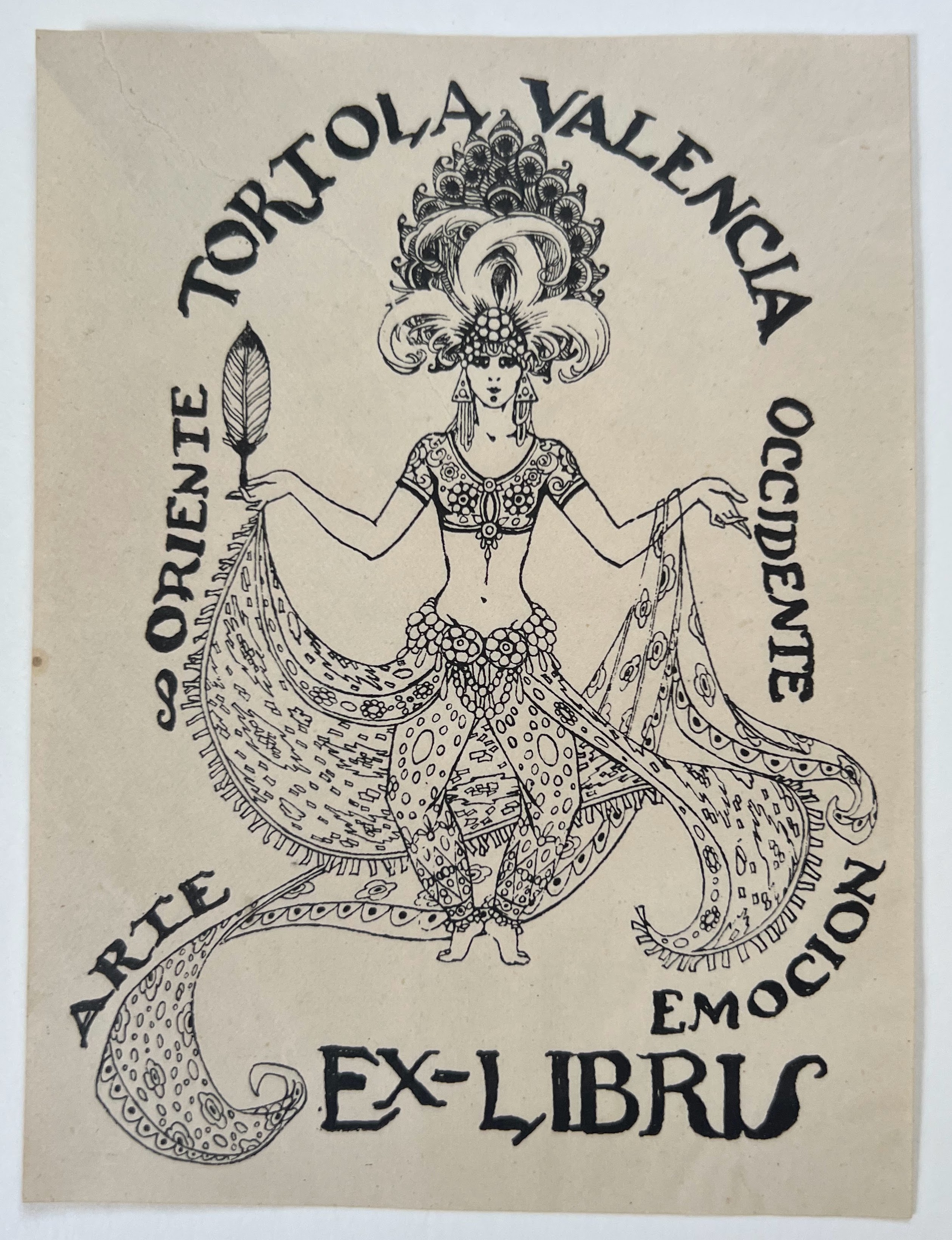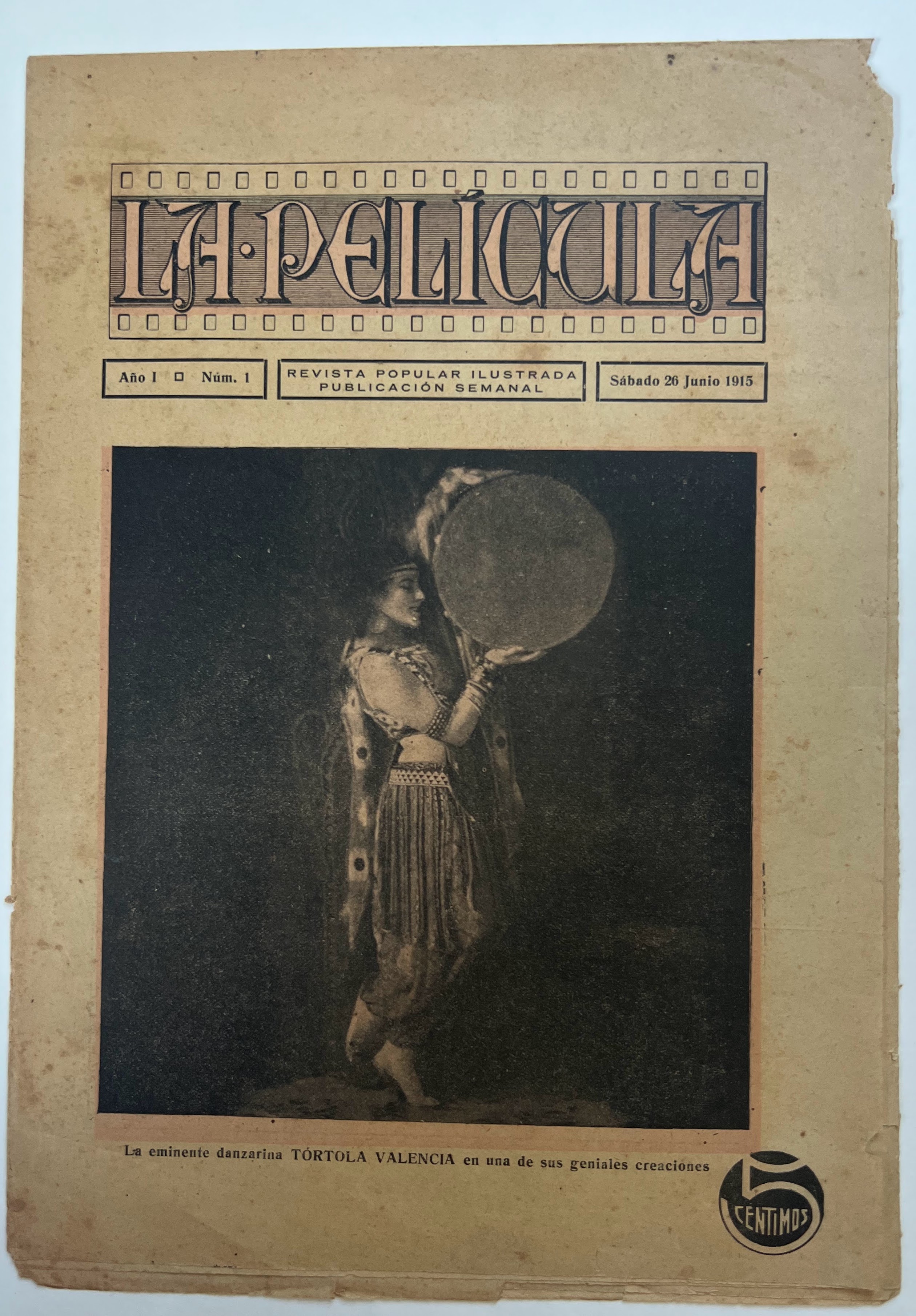GRAPH BOOKS: PRINTED MATTER FROM RADICAL ART AND SOCIAL MOVEMENTS.
FEMINIST HISTORIANS OF MATERIAL CULTURE.
Tórtola Valencia: Photographs, Programs, Ex-Libris and other Documents
1915-1954
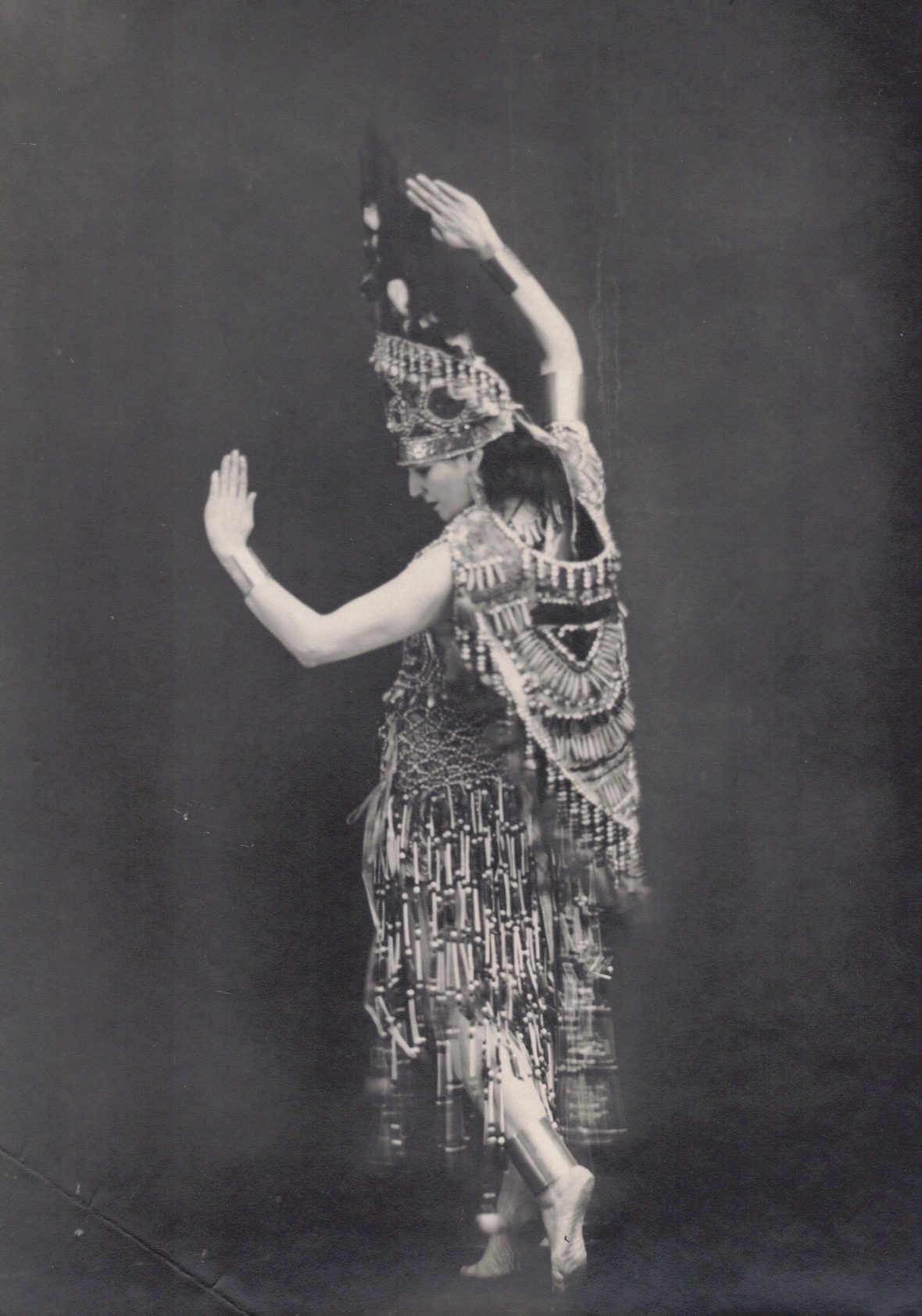
Tórtola Valencia: Photographs, Programs, Ex-Libris and other Documents, 1915-1954.
Though the Spanish-born, British-raised early modern dancer Tórtola Valencia (1882-1955) is rarely discussed in English-language histories, in the 1910s and 1920s “[she] was considered one of the outstanding solo dancers of the period.” Contemporary reviews embraced Tórtola as an innovator with favorable comparisons to Isadora Duncan and Maud Allan. Scholars have speculated that she is often forgotten because her career flourished primarily in Latin America (her third tour there lasted five years). Her well documented engagement with indigenous cultures in Chile, El Salvador, Mexico, and Peru included the study of ceramics, textiles, and music, which were incorporated into her choreography and sets. As a queer woman, the sensuality of her performances and a lifestyle of “occultism” and vegetarianism brought her additional scrutiny later in life, in fascist Spain after 1938.
This group of documents explores various aspects of her identity and self-presentation, which was famously multicultural and adaptive: “In her twenty-two year career, from 1908 to her abrupt retirement in 1930, she ceaselessly toured the main theaters of Europe, North America, and Latin America.[...] In the places where she performed, poets and painters were routinely encouraged by local governments to produce artworks commemorating her visit [...] Moreover, Tórtola herself was a collector as well as a dancer, which makes her a crucial figure for thinking about the circulation of culture in the modernist period via artists on tour; what she collected were artifacts, costumes, cultural ideas, and clippings, and through performances that built on those collections, she offered an image of dance’s struggle to engage with other contemporary cultures and their prehistories.”
One of her most unlikely achievements was the premiere, in 1925, of an Incan Warrior Dance in Lima, during the “Fiesta de la Raza.” Based on the story of the “last” Incan king, Huayna Capac, and set to Incan flute music, the performance received “rapturous reviews, an article in El Comercio (September 19, 1925) stands out with [its] emphasis on the dancer’s capacity to connect different cultures [...] ‘[W]hy should it be a surprise that her soul should also have opened itself to that of our glorious Inca race?’ [...]Tórtola’s publicity photograph for the event would continue to circulate—as the planned frontispiece for an English-language book on Inca civilization that was never published, and far more importantly, as the centerpiece in Peru’s exhibition at the 1929 Panamerican Exhibition in Seville.”
Tórtola carefully constructed her own legend, claiming to be the daughter of an Andalusian gypsy, as well as the barefoot inspiration for Nicaraguan poet Rubén Dario’s ”La bailarina de los pies desnudos.” During her retirement in Franco’s Spain, her sexuality required another fiction: she adopted her longtime companion, Ángeles Magret-Vilá, who became her heir.
As a ceaseless creator of her own public image, Tórtola was known to hand color her publicity photos and draw ideas for her costumes and sets. She also designed ex-libris for her friends. This group features three examples of photographs hand colored by Tórtola and signed in dedication to a friend, with an accompanying letter written by Margret-Vilá. It also includes a rare example of the studio photographs Tórtola made in Lima to commemorate “La danza incaica guerrera.” The scarce prints are the only surviving documentation of this important work and its pioneering visual palimpsest of Incan identity and music in dance.
SOLD
Consisting of:
Tortola Valencia. Barcelona: Thomas, nd., ca. 1917-1918. 27.5 x 19 cm, [32] pp.; publicity book, illus. throughout, with an annotated list of 42 of her dances and excerpts of reviews from her North and South American tours, 1915-1917; in illus. stapled self-wrappers, central sheet separated, rest loose, some edges with closed tears. Not found in OCLC. Three programs from ‘El Dorado’ theater, Barcelona, 1917-1918. All near 16.5 x 12 cm, two single-fold illustrated programs, the third [48] pp; the two former reproducing poems, one by Ruben Dario, the other by Francisco Villaespesa; the third illustrating the full program of dancers for the 1917-1918 season, including La Argentina, Raquel Meller, Amalia Molina, etc., and reproductions of the sets, by painter Juan Morales. Very Good. Not found in OCLC. La Pelicula: Revista popular ilustrada, Año I, Num 1 (June 1915). Madrid, et al. Cover illustration of Tórtola, toned and frayed. The first issue of an otherwise unrecorded? silent film review. Three hand colored publicity photos: each approx. 23.5 x 17 cm, dated in plates 1915-1918, with holograph inscriptions dedicated to Luis Santamarina, together with a single page holograph letter on monogrammed stationery written by Margret-Vilá to Luis Santamarina describing the images “iluminadas por ella misma [Tórtola] en la actualidad.” Papers with chipped edges, not affecting the images, dampstain at the edge of two of the photos, one at blank edge affecting approx 1 x 20 mm of hte print, the other 1.5 x 9 cm. Vivid and extremely scarce self-representations, despite imperfect conditions. Vintage photograph of Tórtola and painter Ignacio Zuloaga, Sitges, n.d. approx. 16 x 16 cm. Vintage Publicity photograph of “La danza incaica guerrera,” n.d. [ca. 1925], 22.5 x 16 cm, near fine, multiple numeric pencil notations verso. Five Ex-Libris by Tórtola for Dr. Juan Catasús, 1954, four 11 x 9 cm, one slightly smaller, very good. One Ex-Libris Tórtola Valencia, 12 x 9 cm, undated. Three monograms, from drawings by Tórtola, clipped from larger sheets, undated.
Clayton, M. (2012). Touring History: Tórtola Valencia Between Europe and the Americas. Dance Research Journal 44(1), 28-49.
See also:
Garland, I. (1997). Early Modern Dance in Spain: Tórtola Valencia, Dancer of the Historical Intuition. Dance Research Journal 29(2), 1-22; and Mitchel Snow, K. (2020). A Revolution in Movement: Dancers, Painters, and the Image of Modern Mexico. University of Florida Press.
